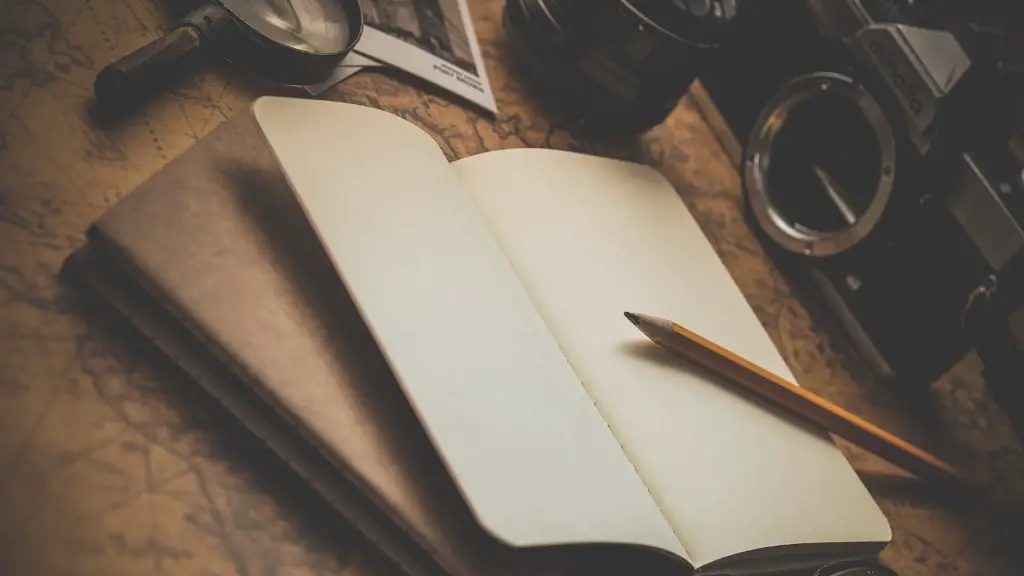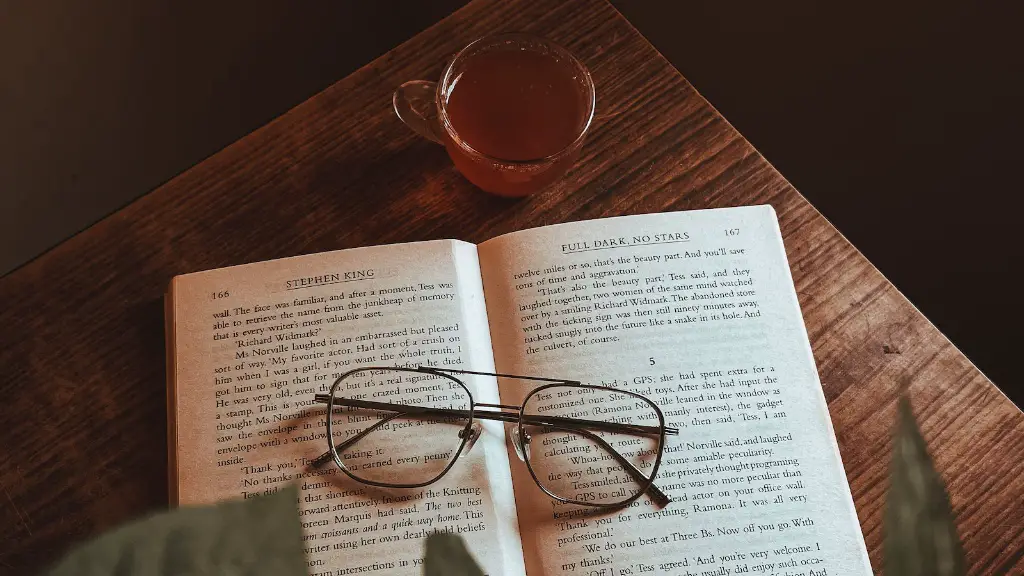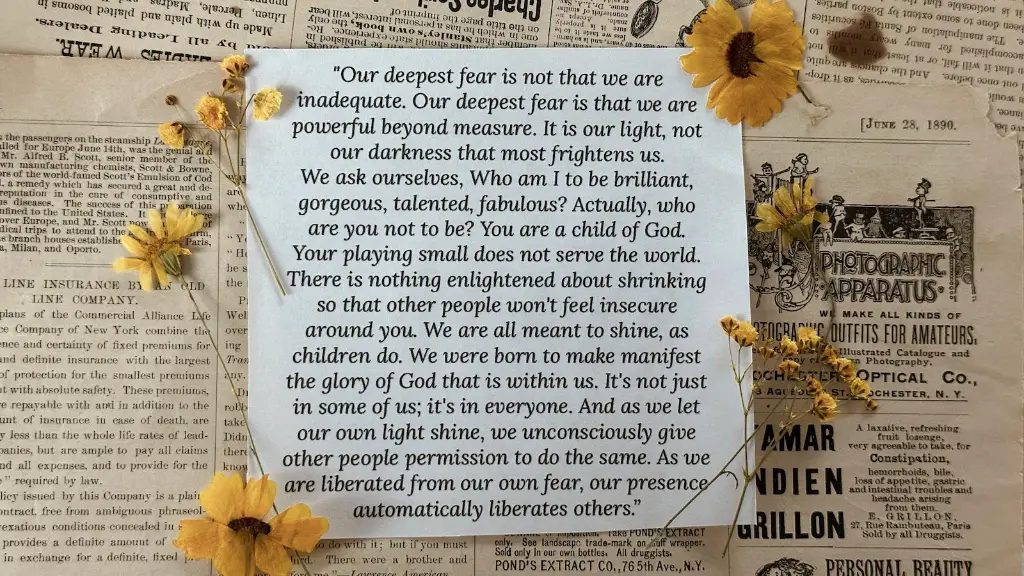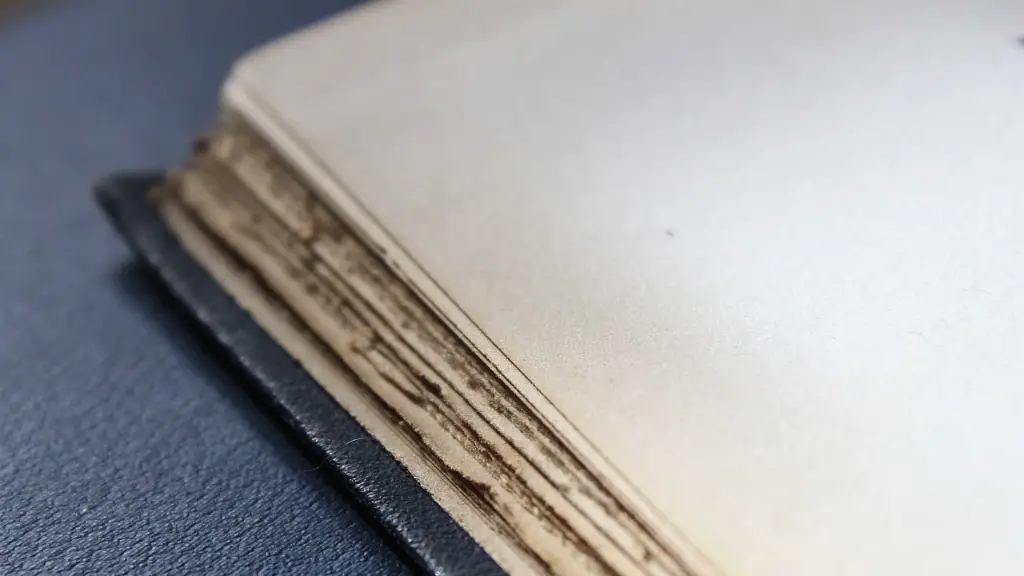Poetry Without Sound
When we consider poetry, we usually immediately think of its potential for poetic sound. But why is sound so essential to poetry? And what would poetry look like without sound?
Sound is a fundamental element of poetry that can be used to effectively convey meaning. It contributes to the meaning of a poem by creating rhythm, providing emphasis, and controlling the flow of the poetry. Additionally, poetry can also create aural images in readers’ minds and emotions like sorrow, joy, anger, or love.
Rhythm is one of the most important elements of any poem and is created by repetition, variation, and balance. Repetition creates patterns of sound that become familiar to the reader and reinforce the meaning of the poem. Variation, on the other hand, introduces new sounds and makes the poem more interesting and engaging. If there is no sound in a poem, these elements of rhythm cannot be achieved, leading to a dull and boring poem.
Emphasis is an important tool for poets as it allows them to draw attention to particular words or phrases in their work. Without sound, emphasis simply cannot be achieved which will mean that important ideas or messages conveyed in the poem may be lost. Furthermore, sound can provide a sense of movement and control the flow of the poem; without it, a poem can often feel static, awkward, and anti-climactic.
Finally, sound can evoke certain feelings and emotions in a reader. A poem’s sound can bring forth feelings of sadness, joy, anger, or even love and can be used to get readers emotionally invested in the poem. Without sound, these feelings will not be evoked, so the poem will be missing an important emotional connection to readers.
How Sounds Are Used In Poetry
Poets employ several sound techniques to create rhythms, emphasize words, and evoke emotions in their work. A few of the most commonly used sound techniques are rhyme, alliteration, assonance, and consonance.
Rhyme is the repetition of similar sounds at the end of two or more lines. Rhyme is often used in poems to create rhythmic patterns in the poem and to emphasize words or phrases. While rhyme is a very powerful sound technique, it can be overused and become clichéd. Alliteration is the repetition of similar consonant sounds at the beginning of two or more words. Alliteration is often used to bring attention to particular words and emphasize them more than others. Assonance is the repetition of vowel sounds in two or more words. Assonance is often used to create a certain rhythm in a poem, as well as to evoke an emotional response from readers. Consonance is the repetition of similar consonant sounds in two or more words. Like assonance, consonance is often used to create a rhythm in a poem and to evoke certain emotions.
The use of sound techniques such as rhyme, alliteration, assonance, and consonance is essential to poetry. Without them, a poem will lose its sense of rhythm, emphasis, and emotional resonance.
How Sound Influences the Meaning of Poetry
The sound and rhythm of a poem can significantly influence its meaning. Poets can use sound to bring out certain meanings, ideas, and messages in their work. For example, a poem that is written in an iambic pentameter will come across as having a very different tone than one written in an octosyllabic meter.
Additionally, poets can use alliteration to draw attention to particular words in a poem and emphasize them. This can help them to effectively convey the intended meaning of their poem. By contrasting words and sounds, poets can also evoke certain emotions in readers, making it easier for them to understand and appreciate the poem.
In short, the sound of a poem can be used to create meaning and emphasize certain ideas or emotions. Without sound, the meaning of a poem will be lost, and it will be much harder to appreciate or understand it.
How to Utilize Sound In Poetry
The use of sound techniques in poetry can often be daunting to starting poets. However, they can use a few techniques to become more comfortable with using sound in their work.
First, poets should read and study many different examples of poetry, paying close attention to the use of various sound techniques. By reading and analyzing different poems, poets can learn how to create rhythms and emphasize words. Additionally, poets should experiment with various sound techniques in their own poetry. Over time, they will become more comfortable with the use of sound and will be able to better utilize it in their work.
Finally, poets should practice listening and hearing the words that they write. Many poets focus too much on the visual elements of a poem and forget about its potential for sound. By actually listening to their words and phrases, poets can develop a better sense of how to use sound effectively.
Conclusion
In conclusion, sound is an essential element of poetry. It allows poets to create rhythms, emphasize particular words, evoke emotions in readers, and convey the intended meaning of the poem. Additionally, poets can use sound techniques such as alliteration, assonance, and rhyme to effectively utilize sound in their work. To become better at using sound in their work, poets should study many different examples of poetry, experiment with sound techniques, and practice listening to their words. Ultimately, sound is an essential element of poetry and should not be overlooked.
Benefits of Sound in Poetry
Sound is one of the most important elements of any poem, as it contributes to its rhythm, emphasis, and emotional depth. Poets can make use of various sound techniques such as alliteration, assonance, and rhyme to add texture and meaning to their work. Furthermore, sound can also invoke certain emotions in readers, allowing them to make a deeper connection with the poem.
Sound can also help to convey complex or abstract concepts by adding emphasis to particular words or phrases. By contrasting words and sounds, poets can effectively communicate the intended meaning of their poem. Additionally, sound can also help to create an atmosphere or mood in the poem, which allows readers to become more immersed in the work.
In short, there are many ways in which sound can enhance a poem. Without sound, a poem will be devoid of rhythm, emphasis, and emotion, making it much more difficult to appreciate or understand.
Types of Sound in Poetry
Sound is an essential element of poetry and is often used to create rhythm, emphasize certain words and ideas, and evoke emotions. There are several different sound techniques that poets can utilize to achieve these effects. Some of the most commonly used sound techniques are alliteration, assonance, and rhyme.
Alliteration is the repetition of similar consonant sounds at the beginning of two or more words. It is a powerful sound technique and can be used to bring attention to particular words in a poem and emphasize them. Alliteration can also create a rhythmic flow in the poem, making it more interesting and engaging to read.
Assonance is the repetition of similar vowel sounds in two or more words. Like alliteration, assonance can be used to create rhythm in a poem and bring attention to particular words. Additionally, assonance can also be used to evoke certain emotions in readers, making the poem more emotionally powerful.
Rhyme is the repetition of similar sounds at the end of two or more lines. Rhyme is often used as an effective tool to reinforce the meaning of the poem and emphasize particular words or phrases. It can also help to create an enjoyable rhythm in the poem and make it more appealing to read.
Sound Effects in Poetry
Poets have many tools at their disposal to create an effective and enjoyable poem and one of the most powerful is sound. By combining different sound techniques, poets can create rhythms, emphasize certain words or ideas, and evoke emotions in readers.
Sound effects are also often used to create vivid aural images in readers’ minds. This can be achieved through onomatopoeia and alliteration, two powerful sound techniques often used to bring life to a poem. Additionally, poets can use sound to create a certain atmosphere or mood in the poem, which can make it more immersive and enjoyable to read.
In short, sound effects are an essential tool for poets. When used effectively, they can help to create an enjoyable and emotionally engaging poem, making it easier for readers to connect with the poem.
Using Sound to Evoke Emotions
Sound is an incredibly powerful tool for poets as it allows them to evoke certain emotions in their readers. By using sound techniques such as rhyme and alliteration, poets can create enjoyable rhythms, emphasize particular words and ideas, and bring out certain emotions in readers.
Additionally, sound can be used to draw attention to particular words or phrases in a poem, making them stand out more than others. By contrasting words and sounds, poets can effectively convey the intended message and meaning of their poem. Sound is also often used to create certain atmospheres or moods, which can make a poem more immersive and enjoyable to read.
Ultimately, sound is an essential tool for poets. Without it, a poem will lack rhythm, emphasis, and emotion and will be much harder to appreciate and understand.





